Исследование влияния ультрафиолетового излучения УФ-В и УФ-С диапазона на посевные качества семян пшеницы «Зерноградка-9»
Исследование влияния ультрафиолетового излучения УФ-В и УФ-С диапазона на посевные качества семян пшеницы «Зерноградка-9»
Аннотация
Повышению продуктивности сельскохозяйственных культур способствует предпосевная обработка семян. Одним из эффективных физических методов предпосевной обработки является обработка семян ультрафиолетовым излучением, которое в зависимости от выбранного диапазона параметров может оказать как стимулирующий эффект, так и бактерицидное действие.
В статье приведены результаты исследования влияния дозы воздействия и длины волны ульрафиолетового излучения УФ-В и УФ-С диапазонов на длину ростков, энергию прорастания и всхожесть семян озимой пшеницы «Зерноградка-9». Были получены уравнения регрессии, отражающие взаимосвязь между параметрами, характеризующими посевные качества семян, и длиной волны и дозой воздействия ультрафиолетового излучения.
Было установлено, что ультрафиолетовое излучение области В при длине волны 313 нм оказывает стимулирующий эффект на семена в диапазоне доз воздействия 24–120 Вт∙с/м2. Длина ростков, энергия прорастания и всхожесть были выше, чем в контроле. Излучение области УФ-С на этапе прорастания семян является сдерживающим фактором.
1. Introduction
Crop production, as one of the branches of agricultural production, is faced with the task of increasing the number of products. The solution of this problem is facilitated by the use of modern technologies at different stages of growing plants, harvesting, storage, and preparation of seed material.
One of the important stages in this technological cycle is the preparation of seed material before sowing. The goals of this stage are to treat the seeds against pathogens and pests, and to improve the sowing qualities of the seeds.
At present, a many of methods of influencing seeds are known. All these methods can be divided into chemical, biological and physical according to the principles of influence. Chemical methods of pre-sowing seed treatment are widely used in agricultural production. These methods are associated with the use of mordants and growth stimulants. Chemical treatment methods are highly efficient, but their use often requires compliance with increased requirements due to their danger to personnel and the environment. Biological methods are based on the use of microorganisms, phytohormones and vitamins. Physical methods are associated with the use of electric and magnetic fields, air ions, ultrasound, radiation of various natures, including radiation related to the optical region.
The effectiveness of treating crop seeds with electromagnetic radiation in this area has been proven by numerous studies , , , .
The influence of optical radiation (especially ultraviolet radiation) on plant seeds is explained by biophysical processes occurring in seeds due to radiation energy. The stimulating effect of ultraviolet radiation is associated with the structural and functional restructuring of membrane formations and intracellular organelles. As a result, the level of lipid oxidation, pH, ATP activity changes, which leads to an increase in bioenergetics and biosynthetics processes , increases the energy potential of seeds, mobilizes their hidden resources, which are used to enhance the growth and development of plants . Small doses of UV radiation, provoking free radical processes, can change the rate of synthetic processes in the grain, accelerate the biosynthesis of enzymes in the initial period of swelling .
Increasing crop yields can be achieved not only by stimulating seeds, but also by having a bactericidal effect on pathogens and pests. Ultraviolet (UV) radiation has a destructive and lethal effect on bacterial viruses (phages), single-celled organisms (microbes and protozoa) and fungi. As a rule, the spectra of action of the lethal effect have a pronounced nucleic maximum at 260... 265 nm . With the appropriate selection of parameters and regimes of influence, a significant decrease in the number of microbial cells on the surface of seeds is noted. A number of studies have found a 17-20-fold reduction in microbiological contamination compared to the control , and even up to 99% .
But bactericidal radiation not only ensures the effective destruction of phytopathogens, but can also be a deterrent to seed germination and lead to a decrease in seed germination. The addition in yields in this case can be explained by a lowering in losses due to diseases.
Despite numerous studies aimed at studying the effect of parameters and regimes of influence to ultraviolet radiation on the sowing qualities of agricultural seeds, the specifics of the impact of ultraviolet radiation areas on biological objects, the difference in the properties of seeds make work in this direction relevant.
The purpose of the study is to determine the parameters and modes of exposure to ultraviolet radiation of the UV-B and UV-C ranges on the sowing qualities of winter wheat seeds "Zernogradka-9".
2. Research methods and principles
A laboratory experiment was carried out to study the effect of the parameters and modes of ultraviolet radiation of the UV-B and UV-C ranges on the length of sprouts, sprouting energy and germinating ability of winter wheat seeds "Zernogradka-9". Seed treatment was carried out at the LOS-2 installation. With the help of replaceable filters, radiation with wavelength of 248, 280, 302 and 313 nm were singled out. During processing, the following dose values were maintained – 24; 48; 72; 96; 120 W∙s/m2. The indicated dose values were achieved by changing the current of the lamp and the degree of opening of the diaphragm at a constant duration of processing equal to 60 seconds. The magnitude of irradiation was monitored using a UV radiometer of the TKA-ABC model.
The experiment and processing of the results were carried out on the basis of the educational, scientific and production agrotechnological laboratory of the institute in accordance with the methodology set forth in GOST 12038-84 .
Statistical processing of experimental data was carried out using the Statistica program.
3. Main results
The results of the research are shown in Table 1. In the course of the regression analysis, the types of functional dependencies and the values of the coefficients of the regression equations were determined, the significance of the coefficients of the regression equations was assessed according to the Student's criterion and the regression models were evaluated for adequacy.
The results of the regression analysis of the dependence of sprout length on dose and wavelength are shown in Table 2. The main influence on the length of sprouts is exerted by the wavelength of ultraviolet radiation. Since the coefficients of the equation related to the dose of exposure were insignificant, the analysis was performed with refined coefficients (see Table 3 and Figure 1).
Table 1 - Results of studies of the influence of UV radiation on the length of sprouts, sprouting energy and germinating ability of wheat "Zernogradka-9"
Dose of exposure, W∙s/m2 | Wavelength, nm | Length of the sprouts, mm | Sprouting energy, % | Germinating ability, % |
24 | 248 | 76,45 | 41,00 | 69,00 |
24 | 280 | 61,87 | 43,50 | 70,30 |
24 | 302 | 76,90 | 54,00 | 75,75 |
24 | 313 | 88,47 | 69,00 | 84,75 |
48 | 248 | 68,07 | 43,00 | 70,00 |
48 | 280 | 50,5 | 43,50 | 72,60 |
48 | 302 | 83,02 | 60,50 | 76,75 |
48 | 313 | 91,74 | 71,75 | 85,50 |
72 | 248 | 75,50 | 63,10 | 82,30 |
72 | 280 | 75,10 | 68,50 | 83,00 |
72 | 302 | 85,90 | 78,00 | 86,50 |
72 | 313 | 92,00 | 85,00 | 91,30 |
96 | 248 | 77,17 | 59,25 | 75,00 |
96 | 280 | 61,78 | 61,25 | 77,00 |
96 | 302 | 86,78 | 61,25 | 82,30 |
96 | 313 | 92,80 | 77,00 | 84,50 |
120 | 248 | 75,00 | 57,75 | 75,00 |
120 | 280 | 65,70 | 60,25 | 75,25 |
120 | 302 | 70,61 | 60,00 | 78,00 |
120 | 313 | 93,47 | 76,75 | 83,00 |
Table 2 - Results of the analysis of the DR=f(ES, L) relationship
Table 3 - Results of the analysis of the relationship DR=f(ES, L) with refined coefficients of the regression equation
where DR – is the length of the sprouts, mm;
L – is the wavelength, nm.
For the convenience of analyzing the obtained dependence, a contour graph of the response function DR=f(ES,L) was also built using the regression equation (1).
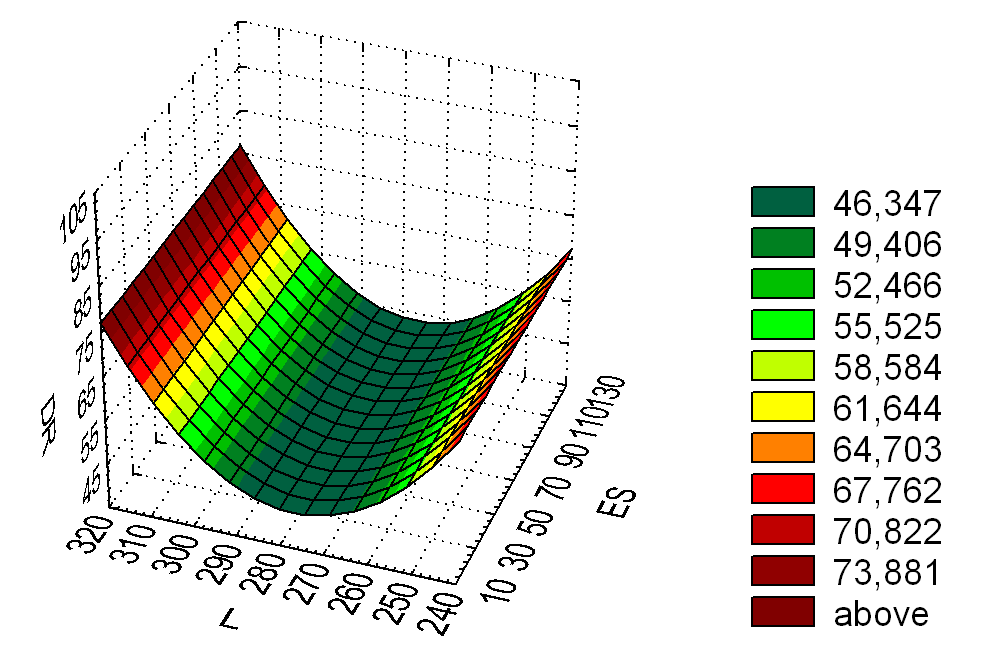
Figure 1 - Surface of the dependent variable DR=f(ES, L) constructed on the regression equation (1)
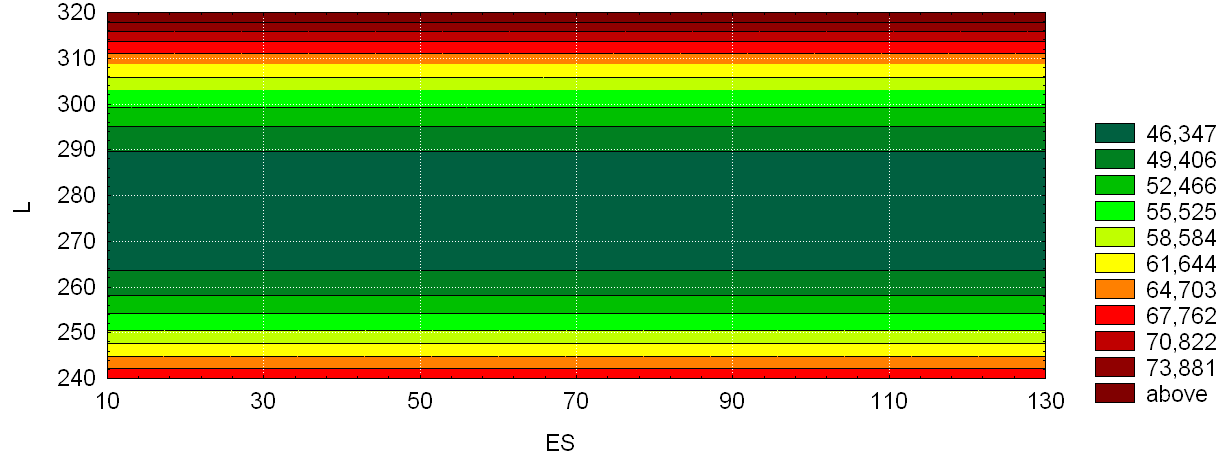
Figure 2 - Contour graph of the dependent variable DR=f(ES, L) constructed on the regression equation (1)
Table 4 - Results of EP=f(ES, L) dependence analysis
where EP – is sprouting energy, %;
ES – is the dose of exposure, W∙s/m2.
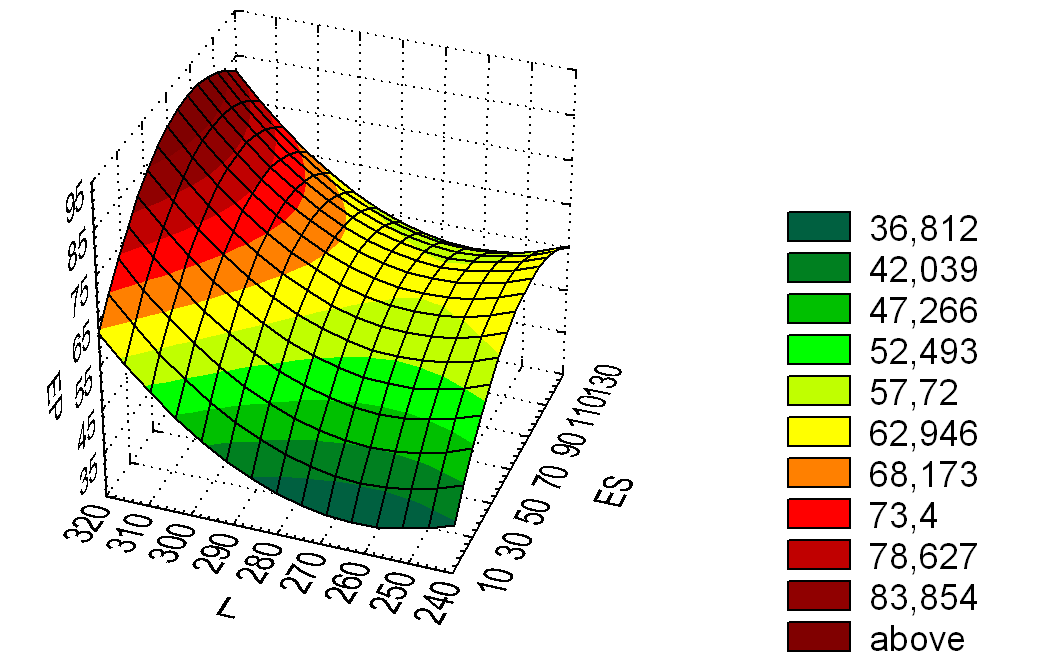
Figure 3 - Surface of the dependent variable EP=f(ES, L) constructed on the regression equation (2)
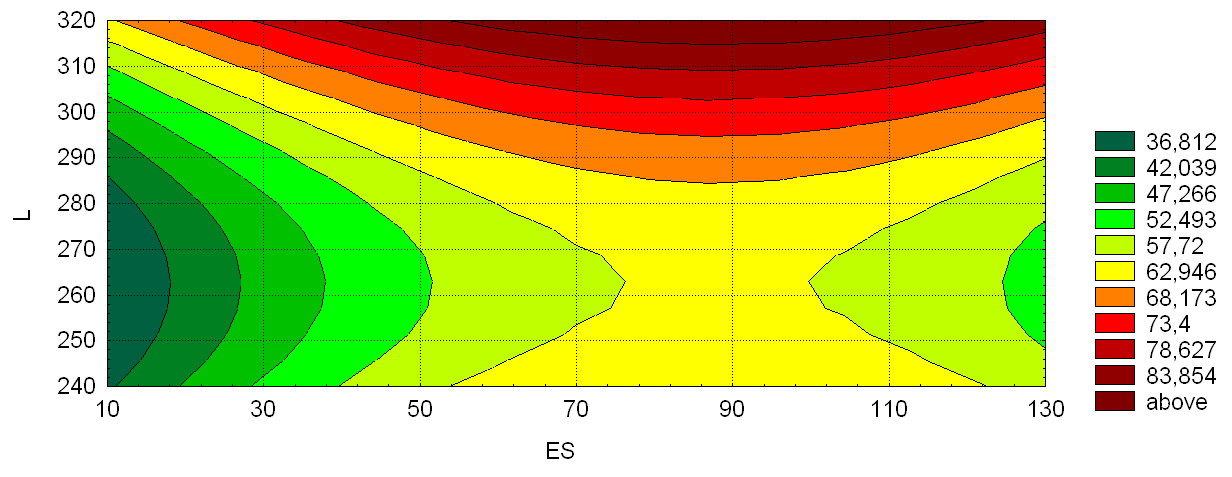
Figure 4 - Contour graph of the dependent variable EP=f(ES, L), constructed on the regression equation (2)
Table 5 - Results of VS=f(ES, L) dependence analysis
where VS – germinating ability, %.
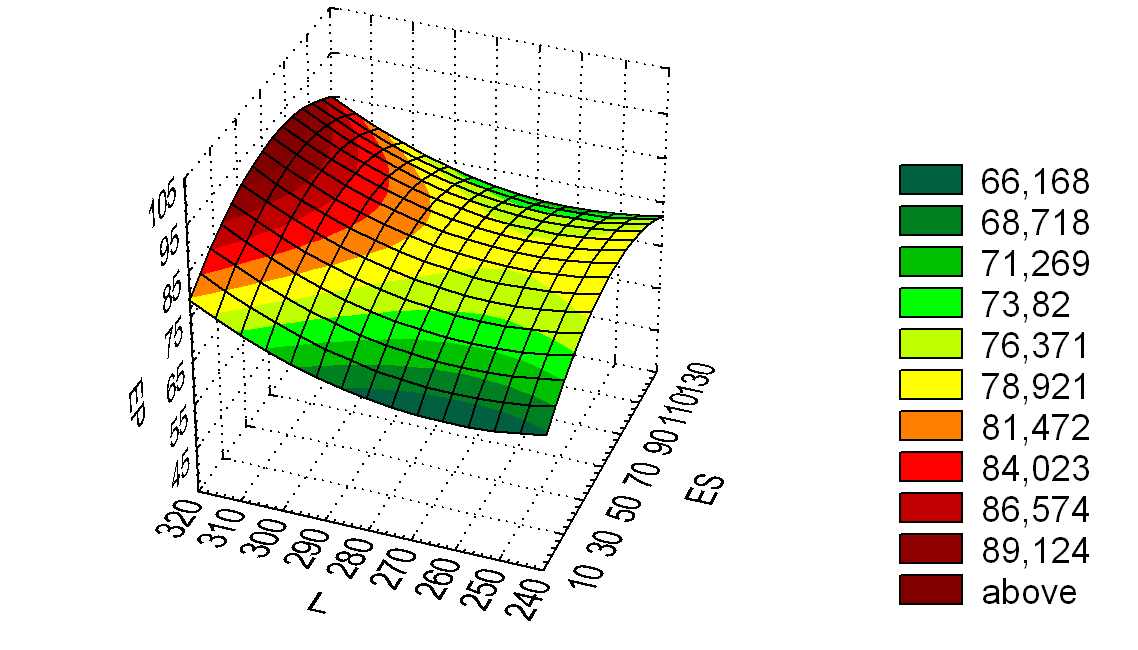
Figure 5 - Surface of the dependent variable VS=f(ES, L) constructed on the regression equation (3)
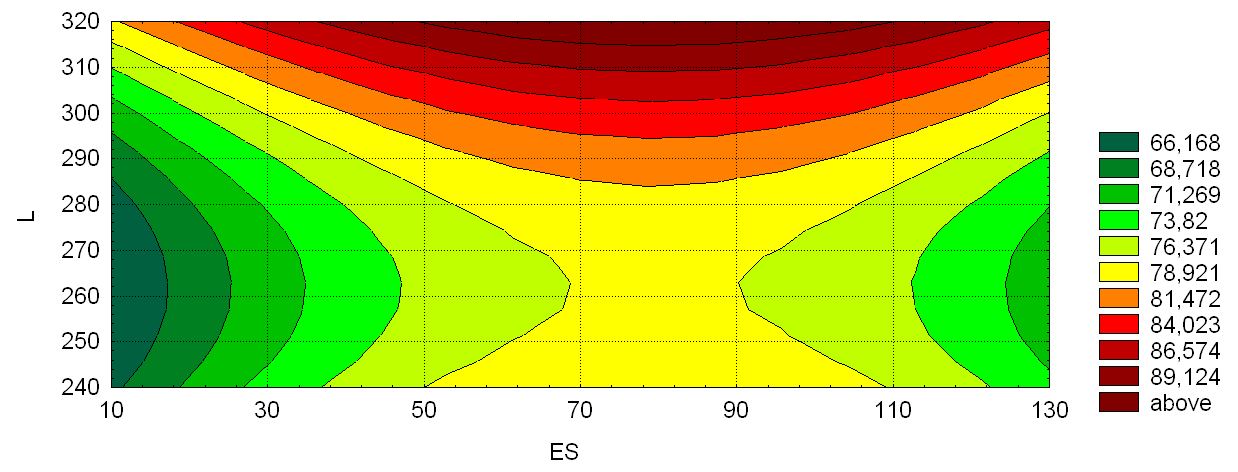
Figure 6 - Contour graph of the dependent variable VS=f(ES, L) constructed on the regression equation (3)
The obtained regression equations adequately describe the relationship between the parameters characterizing the sowing qualities of seeds (sprout length, sprouting energy and germinating ability) and the parameters characterizing ultraviolet radiation (exposure dose and wavelength). The obtained values of the Fisher criterion based on the results of regression analysis are higher than the theoretical values of the criterion. Changes in sprout length, sprouting energy and germinating ability by more than 77% are explained by changes in the dose of exposure and wavelength.
4. Conclusion
Ultraviolet radiation of the UV-B region has a stimulating effect on the seeds of wheat "Zernogradka-9". The greatest effect in this spectral range is achieved at a wavelength of 313 nm. The increase in germination compared to the control is more than 13%. The stimulating effect of radiation in the UV-C region is insignificant (about 1%), it is achieved in the dose range of 59–90 W∙s/m2. Basically, the radiation of the UV-C region is a deterrent to germinating ability of the seed. A positive effect in the form of increased yields can be achieved by reducing losses due to diseases.
